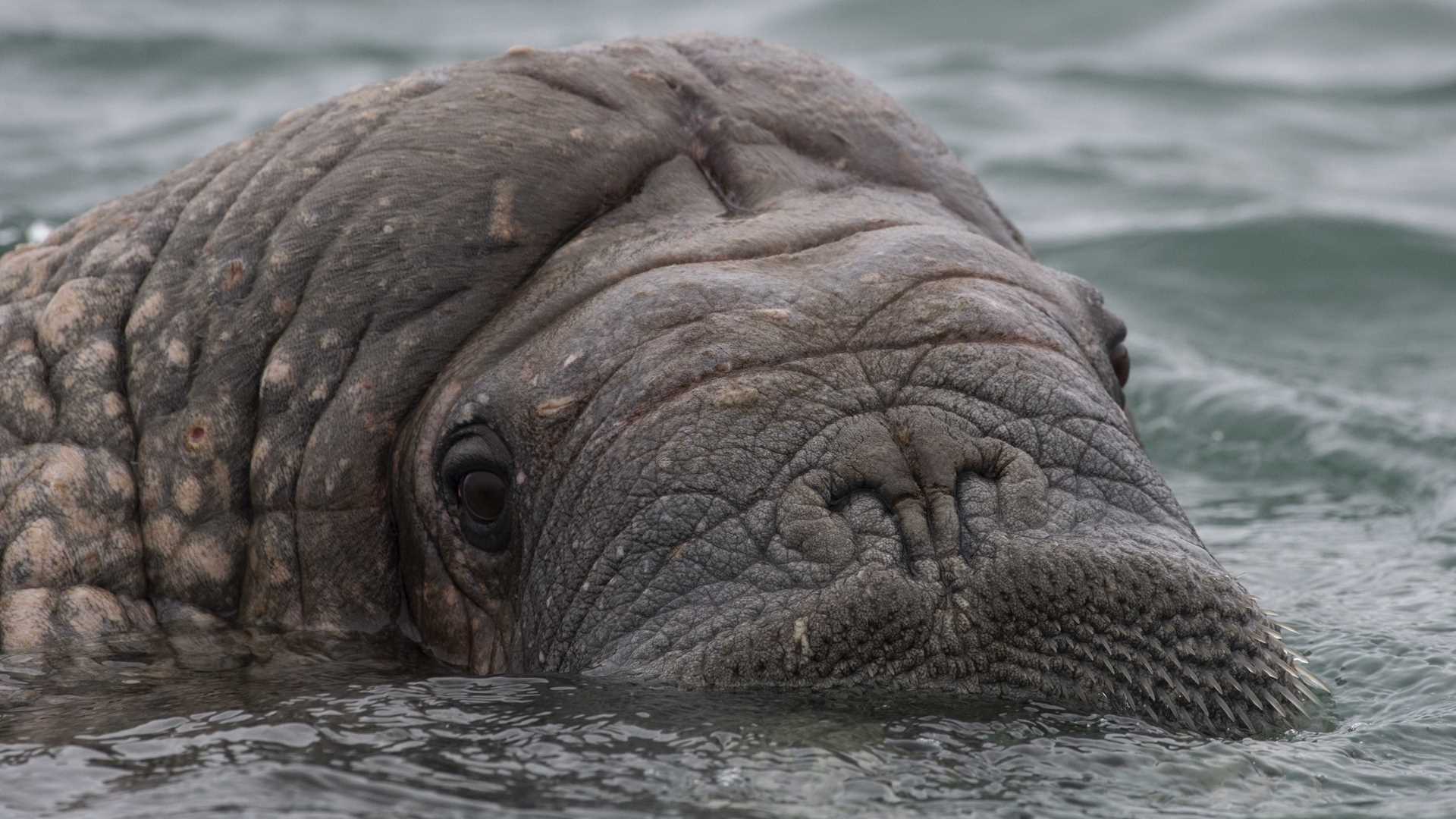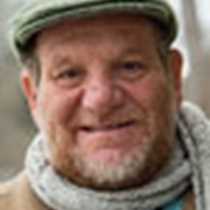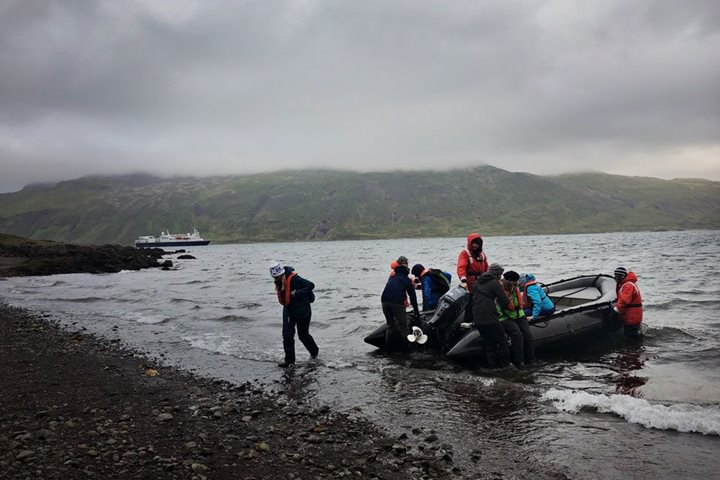As the bridge began to fill with early risers, a dense fog covered the sea. We were underway to the Austfonna, the third largest ice cap in the world. We were getting close, and small pieces of ice were starting to give way to larger, more prominent pieces, as the National Geographic Explorer moved ever closer. Our constant companions of fulmars, kittiwakes, and guillemots made continuous flights around our ship, and as we awakened from our sleepy state, the realization of where we are settled in.
As we make our way closer to the ice cap, the fog lifts, exposing a wall of ice that stretches more than one hundred miles. It towers over us as the captain moves the ship closer and closer to the sculpted wall. The overcast sky adds to the drama that unfolds; small icebergs litter the sea all around us.
After some time spent trying to find some of the other jewels of the Arctic habitat, we set sail for an area known as Torellneset. Here we hoped to find one of the most well-known animals of the north, the walrus. It’s foggy again, and our hopes of making a landing are in question. Our expedition leader announces concern that the low visibility may heighten the danger of not being able to see a polar bear, who may also have ideas of visiting the walrus haulout. A scouting party is sent out to see if landing is a possibility. A short time later, we once again hear the tell-tale sound of the microphone, just before an announcement is made. This time, it is the voice of our assistant expedition leader, who informs us that walks will not be possible. Our hearts drop, but only for a moment, as she tells us that instead of a beach landing, we will be cruising along the walrus colony in Zodiacs. She instructs us to prepare for boarding.
Excitement is in the air. The brisk wind confronts us as we step into the Zodiacs. Settled in, we begin the relatively short journey to the haulout zone. As we approach, we notice splashing ahead of us. One by one, we all realize there are walruses frolicking in the water. As we get closer, we expect the animals to back away from our inflatable crafts, but not this time. Walruses have poor eyesight, which may explain why they can’t quite see the life-jacket-clad creatures before them. They approach us in force. When wildlife decides that you are as interesting to them as they are to you, it is always a joy to experience. One by one, the walruses come up next to our vessel. The air fills with the sound of their snorting. Who would have figured that the mere breathing of an animal could be so entertaining?
Even with the incredible sightings of the day, our guests were eager to see the king of the Arctic, the polar bear. Understanding that there are no guarantees when it comes to wildlife sightings, they have nevertheless travelled far with the hope of seeing the true representative of the North. The announcement came: a polar bear had been sighted at the edge of the ice ahead of us. Ever so slowly, the ship moved closer to the bear, slicing through ice the whole way. The bear kept walking, and it seemed that we would have to be content with watching it from a distance. Finally, the bear decided that we deserved a closer look, and began to move closer. Our hearts nearly burst the first time it jumped from one ice floe to another, but as the bear kept going, soon we were anticipating the next jump. To witness such an animated bear was more than any of us had hoped for. Soon, it was right next to the ship, rolling on its back and sliding in the snow. It was as though the bear had realized our hopes and decided that it would reward us with stories to tell long after our expedition ended.
We had hit the Arctic trifecta: great ice, curious walruses, and a most playful polar bear. We had not yet, however, had our last significant sighting of the day. Just before recap, 12 more bears were sighted. Yes, 12! Most of them were mothers and their cubs. They were not as close as the first bear we had seen, but the sheer number made for a magnificent sight! The sun came out in a spectacular manner, adding to the wonder. The contrast between the two polar bear sightings only went to show us that this is a land of many faces, many moods. We wonder what the days ahead have in store for us.







